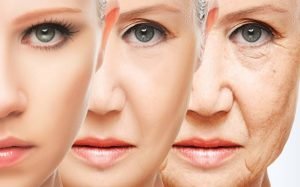12 Natural remedies to remove skin blemishes

With medicinal plants, supplements and topical remedies you can prevent and treat blemishes. They help you cleanse and regenerate the skin inside and out.
With age, brown oval or round spots usually appear on the face, hands and neckline. They are blemishes and they are not dangerous, but they can be unsightly.
Blemishes are actually excess pigmentation . They are caused by ultraviolet-induced hyperplasia of melanocytes after years of sun exposure.
Other factors also favor its appearance, such as hormonal changes , pollution , tobacco , drugs and stress .
Various medicinal plants and natural supplements can help us prevent their appearance or soften them.
Both the proliferation of free radicals and the decrease in liver detoxification capacity have been associated with an increased appearance of spots on the skin.
With good drainage and the contribution of quality antioxidants (especially glutathione precursors such as cysteine, glycine, glutamic acid, vitamin C, zinc, selenium and lipoic acid), both the quantity of Blemishes and their coloration are reduced. We propose several plants and supplements that help you in this regard.
In addition to performing an internal cleansing and antioxidant treatment, it is very useful to apply topical remedies to discolor the spots .
It does require, of course, a good dose of patience , as it is a slow process and it may take time until results are noticed. You will also find various foods and oils to apply to the skin .
The most effective natural solutions against blemishes
1. Burdock

A very useful plant to get rid of toxins that end up depositing in the epidermis and oxidizing its cellular components is burdock ( Arctium lappa ). Its root contains inulin, phytosterols and phenolic acids, responsible for its purifying and protective action. It is ideal for removing all kinds of impurities from the skin : acne, eczema, abscesses and blemishes.
It is taken as an infusion three times a day : a cup of hot water is added to a teaspoon of the root, let it rest for four minutes, strain and drink warm.
It can also be taken in the form of a dry extract (1,500 mg daily) or tincture (15 drops dissolved in half a glass of water before meals).
2. Calaguala

It is another effective plant that can be taken as an infusion or tincture . You can also apply it topically on the affected area.
The root of this fern ( Polypodium calaguala ) purifies the blood and cleanses the skin . It especially favors the elimination of uric acid , stimulates cellular immunity and protects the epidermis from the peroxidation that causes lentigines.
3. Thought

The small pansy flowers ( Viola tricolor ) are rich in mucilages, flavonoids, salicylic acid, and vitamin C.
They remove toxic residues that stain the skin and it is effective in mitigating senile dermatosis.
It is taken as an infusion or tincture , but can also be applied to the skin.
4. Horsetail

It contains saponins, flavonoids, organic acids, and resins, as well as the minerals silicon and potassium. All these substances from horsetail ( Equisetum arvense ) purify and participate in the regeneration of collagen and elastin fibers .
Prepare it as an infusion to drink or apply to the skin.
5. Oatmeal and lemon mask

Applying this mask continuously on the face and hands contributes over time to lighten and eliminate brown spots that appear on mature skin .
To prepare it, mix 1 tablespoon of oatmeal with half a lemon juice to form a homogeneous paste. Then apply it on the spots and let it act for about twenty minutes before removing it with warm water.
You have to apply the mask three times a week until you see results.
6. Castor oil

The castor oil ( Ricinus communis ) can often find its English name: castor oil . Applied to the skin, it helps you eliminate lentigines .
It is applied twice a day giving a gentle massage until absorbed. It can also be mixed with baking soda and applied every night.
It takes a minimum of four to six weeks to see its effects.
7. Cider vinegar

It is another effective remedy against lentigo . A cotton swab is soaked in the vinegar to tap the spots twice a day.
8. Onion juice

The best way to use the onion is to apply it fresh on the affected area . If you scratch it first, it will be easier to apply it and will better release its juices so that they act on the stain.
9. Essential oil

Its detoxifying and skin whitening capacity make it a great ally for beauty treatments.
It is advisable to mix 3 or 4 drops in 5 ml of vegetable oil and apply daily with a cotton on the spots.
10. Sea buckthorn

The oil of this plant ( Crataegus monogyna ) nourishes, hydrates and rejuvenates the skin thanks to its richness in omega-7 fatty acids (palmitoleic acid) and antioxidants such as vitamin C, E and beta-carotene.
You can take it as a supplement. The recommended dose is 1,400 mg daily.
11. Lipoic acid

This molecule develops its antioxidant action at three levels: it scavenges free radicals, recycles antioxidants and aids in the synthesis of glutathione.
It is found naturally in cabbages and brewer’s yeast . In supplement you can take between 250 and 600 mg a day.
12. Methylsulfonylmethane

MSM contains sulfur , a mineral that flexes cell walls, promotes cleansing, and prevents the collagen crosslinks associated with aged, hard skin .
It is found naturally in garlic , onions , turnips, and wheat germ . In supplement about 500 mg daily are recommended.






